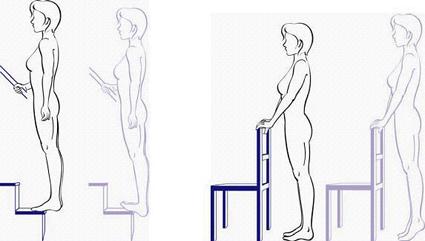
INJURY OF THE MONTH - ACHILLES TENDINOPATHY/TENDONITIS
Pains
What is the Achilles tendon?
The Achilles tendon is the strongest and largest tendon in...
Read more
Pains
April 11th, 2023

What is the Achilles tendon?
The Achilles tendon is the strongest and largest tendon in the body, joining the calf muscle complex (which consists of two layers, gastrocnemius and soleus) to the heel bone or calcaneus. As a result, when the calf-Achilles combination contracts, the foot pushes off the ground to propel us forwards, therefore allowing us to walk, run, hop and jump.
What is Achilles tendonitis?
Achilles tendonitis is an inflammation (swelling) of the tendon, which occurs as a result of repetitive contractions or "overuse" of the tendon. It usually occurs as a result of walking, running or any jumping activity/sport such as basketball or dancing, where larger forces are required.
What are the symptoms of Achilles tendonitis?
People with Achilles tendonitis experience pain during and after exercising. Walking, running and jumping activities become painful and difficult. Symptoms include stiffness and pain in the back of the ankle when pushing off the ball of the foot.
What is the treatment of Achilles tendonitis?
Accurate diagnosis of Achilles tendonitis is essential before commencing treatment, so that other conditions are ruled out which may require further investigation. The initial phase of treatment involves identification of the aggravating activity/sport, and regular icing to address the acute or chronic inflammation. Deep tissue massage (including regular foam roller use) used as soon as possible, as this focuses on the common "cause" of the injury. Deeper massage around the tendon will ensure the area returns to pre-injury flexibility, and at the same time strengthening of the calf/Achilles complex commences. This includes specific exercises including eccentric calf raises on a step or using a Swiss Ball depending on the severity of the pain. Other treatment techniques may include analysis of the shape of the foot/leg and footwear, associated problems such as lower back stiffness and core weakness, and the use of heel supports/orthotics which again focus on any underlying cause, especially in chronic conditions.
How can Achilles tendonitis be prevented?
Including regular appropriate calf and Achilles stretches in your exercise program will minimise the risk of tightness and subsequent injury. Regular use of the Foam Roller (affectionately known as the “torture tube”) has seen a dramatic decrease in this type of injury in our own research with our patients worldwide; this is due to maintaining optimal calf fibre length therefore decreasing tightness and inflammation. Strengthening exercises including calf raises (especially in a plank position as per the picture below), and higher level activities on a balance board or mini-trampoline, are an excellent way of strengthening the Achilles in a functional way.
PLEASE WATCH OUR RECENT WEBINAR ON THIS SUBJECT BY CLICKING ON THE FOLLOWING LINK:
Please feel free to contact us for more advice or information about this or any other injury.


Not sure what you need? Talk to one of our experts.
Contact Us
Who we work with